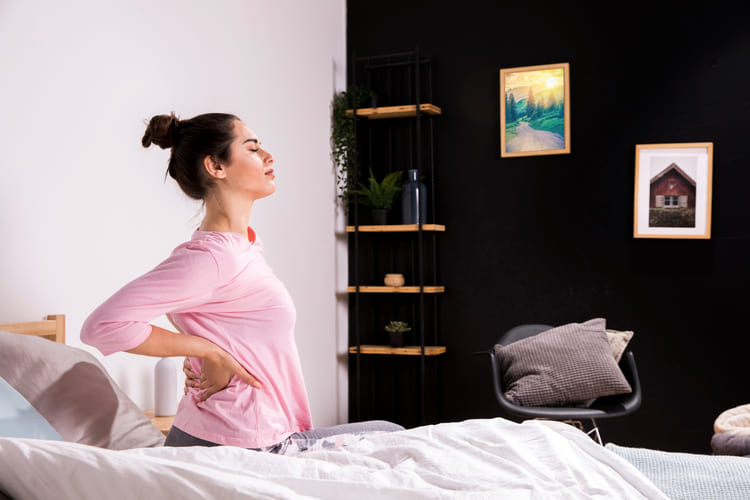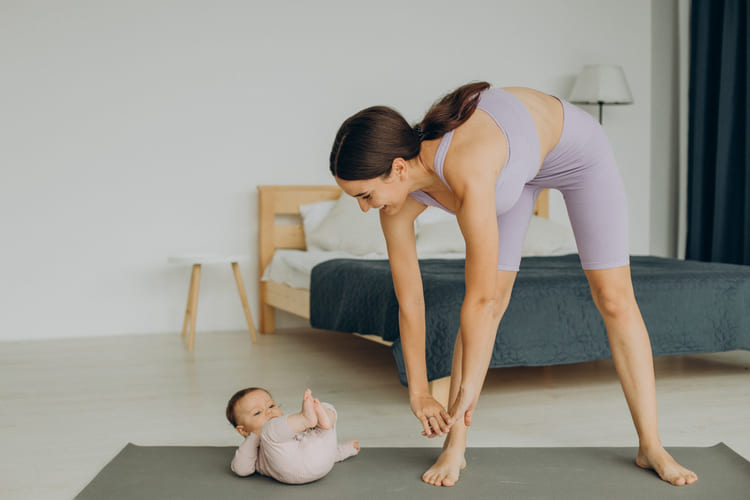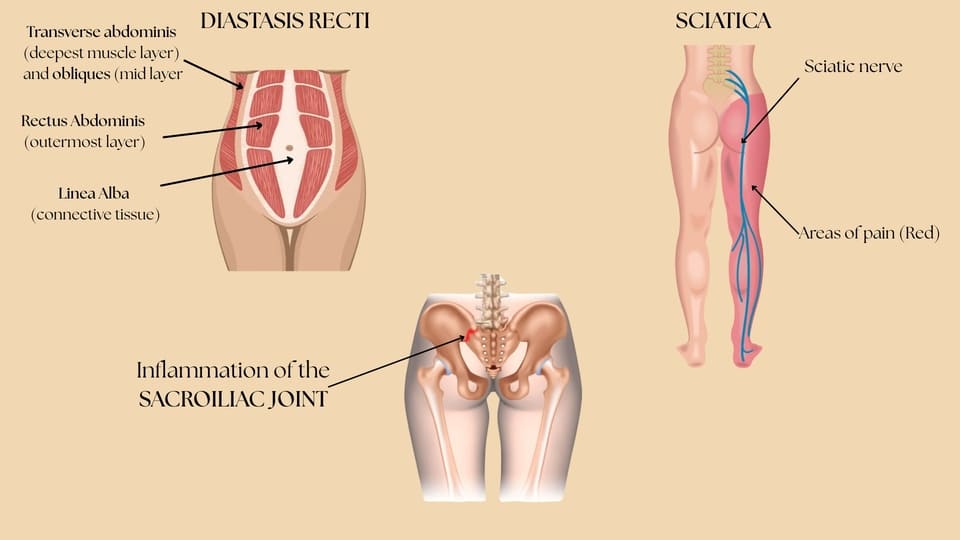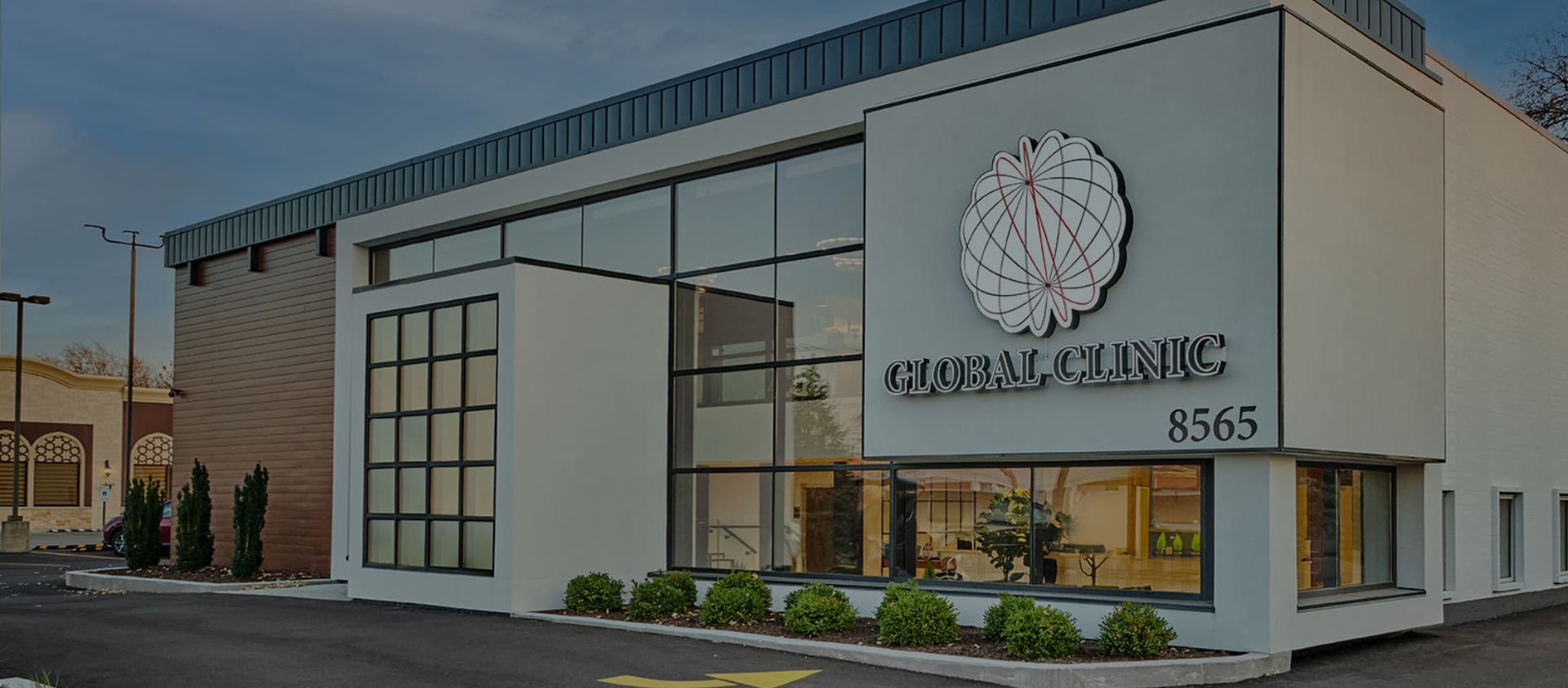That aching back didn’t disappear when your baby arrived? You’re not alone. Postpartum back pain affects three out of four new mothers, turning simple tasks like lifting your little one into uncomfortable challenges. In this article, we will discuss why back pain postpartum happens, quick relief methods, safe exercises, lifestyle changes, and when professional help becomes necessary for your recovery.
Understanding Postpartum Back Pain
Your body doesn’t just snap back to normal once delivery ends. Multiple factors combine to create that persistent ache that makes bending over the crib feel like a monumental task.

Hormonal Changes
During pregnancy, your body produces relaxin, a hormone designed to loosen joints and ligaments for delivery. This hormone remains in your system for weeks after birth. While it helps your body heal, it also leaves your joints more flexible than usual, which means less stability for your spine and pelvis. Think of it as having loose bolts holding everything together.
Physical Changes
Your core muscles underwent significant changes. Those abdominal muscles stretched considerably, and many women develop diastasis recti – a separation of the abdominal muscles down the middle. When your stomach muscles can’t properly support your spine, your back muscles compensate by working harder, leading to tension and discomfort.
New Daily Demands
Life with a newborn throws your body through new physical challenges every hour:
- Feeding sessions where you hunch over your baby for what feels like forever
- Lifting your growing child (who seems to gain weight daily)
- Wrestling with car seats that weigh more than your baby
- Constantly bending down to pick up toys, burp cloths, and everything else
Your posture shifts to handle these new movements, often creating muscle imbalances. Add leftover pregnancy weight and sleep deprivation to the mix, and even minor lower back pain postpartum can feel overwhelming.
Immediate Relief Strategies
When pain hits and you need relief fast, try these approaches that actually work.
Heat and Cold Therapy
Heat feels amazing on tense, knotted muscles. A warm shower, heating pad, or even a warm compress for 15-20 minutes can work wonders. Just don’t go overboard with the heat, especially if you’re breastfeeding – it can temporarily mess with milk production. Cold works better when you’re dealing with sharp pain or swelling. Wrap some ice in a thin towel and place it on the painful spot for 10-15 minutes. The numbing effect gives you a much-needed break from the discomfort.
Safe Pain Relief Options
Sometimes you need backup from the medicine cabinet for postpartum back pain relief:
- Ibuprofen: Your friend for both pain and inflammation
- Acetaminophen: Tackles pain without the anti-inflammatory component
Here’s the thing about medication while breastfeeding: always check with your healthcare provider first. Some medications sneak through breast milk, and you want to make sure whatever you’re taking is safe for both you and your baby.
Position and Movement Changes
Small tweaks throughout your day can prevent muscles from staging a revolt:
- Pile up pillows to bring the baby to you instead of becoming a human pretzel during feeding
- Switch between sitting and standing – your back gets cranky when stuck in one position
- Take mini walks around your home, even if it’s just to the kitchen and back
- Roll your shoulders and do gentle neck stretches whenever you think of it

How to Relieve Postpartum Back Pain Through Exercise
Exercise with a newborn? Sounds impossible, right? But gentle movement actually speeds up healing and builds the strength you need to chase after a toddler someday.
Getting Started Safely
Firstly, you should get approval from your healthcare provider. Most women can start gentle activities within days of delivery, but your recovery timeline might be completely different from others.
Foundation Exercises
Walking is your secret weapon. It’s simple, costs nothing, and works wonders for lower back pain after labor:
- Start with short 5-10 minute strolls around the block
- Build up gradually – your body will tell you when it’s ready for more
- Push that stroller for a bit of resistance training
- Bonus: fresh air and a change of scenery can work miracles for your mental state
Your core and brain need to start talking to each other again:
- Diaphragmatic breathing: Lie down with knees bent, one hand on chest, one on belly. Breathe so the belly hand moves more – this wakes up those deep core muscles.
- Pelvic tilts: Flatten your lower back against the floor by tilting your pelvis, then release. Simple but effective.
- Gentle bridges: Lift your hips to make a straight line from knees to shoulders. Hold briefly, then lower slowly.
Cat-Cow Stretches
Get on hands and knees, then alternate between arching your back (cow) and rounding it like an angry cat. This movement counteracts all that forward hunching from baby care and provides sweet relief for pain in the lower back postpartum.
Upper Back Relief
These target the knots that develop from endless feeding sessions:
- Doorway chest stretch: Put your forearm against a doorframe and lean forward gently
- Neck side bends: Tilt your head to each side and hold for 20-30 seconds
- Shoulder rolls: Roll those shoulders backward in slow circles
Movement-based rehabilitation works best in pain management when tailored to your specific needs and recovery stage. Professional guidance can help ensure you’re performing exercises correctly and progressing safely.
When Basic Relief Isn’t Enough
Some women experience extreme lower back pain after pregnancy that doesn’t respond to basic relief measures. This level of discomfort requires more targeted approaches.

Common Severe Conditions
- Diastasis Recti
When your abdominal muscles separate significantly, they can’t support your spine properly. Your back tries to compensate, leading to chronic tension and the kind of pain that makes getting out of bed feel like a major accomplishment.
- Sciatica
This is the shooting pain that starts in your lower back and travels down your leg like an electric shock. Pregnancy can trigger it, and sometimes it decides to stick around after delivery. Nerve pain doesn’t mess around.
- Sacroiliac Joint Issues
This creates deep, achy lower back pain after pregnancy that gets worse when you transition from sitting to standing. Your pelvis might not have returned to its original position, creating ongoing instability that drives you crazy.
Professional Treatment Options
When your self-care routine stops working, these professionals can help:
- Physical therapy: They’ll identify exactly which muscles aren’t pulling their weight and design a plan to fix it
- Chiropractic care: Gentle adjustments can realign joints that got knocked out of place
- Massage therapy: Addresses those stubborn knots and improves circulation
- Specialized women’s health programs: Take a comprehensive approach to multiple issues at once
Daily Life Adjustments That Work
Simple changes in how you tackle daily tasks can dramatically reduce back pain after giving birth and keep future episodes at bay.
Better Feeding Positions
Breastfeeding Setup:
- Bring baby to breast, not breast to baby – resist the urge to become a human question mark
- Nursing pillows are worth their weight in gold for getting the baby at the right height
- Plant your feet flat on the floor in a supportive chair
- Try side-lying positions for upper back relief
Bottle Feeding Tips:
- Cradle the baby properly instead of hunching over
- Use a chair that actually supports your back
- Switch arms regularly so you don’t develop a lopsided look
Safe Lifting Techniques
Protect your healing back with proper lifting methods:
- Squat down using your leg muscles rather than bending at the waist
- Keep your back straight and hold objects close to your body
- Apply these principles when lifting laundry baskets, car seats, and other items
- Ask for assistance with heavier objects when possible
Sleep and Recovery Support
Sleep Positioning:
- Side sleeping with a pillow between your knees keeps everything aligned
- Back sleepers should stick a pillow under their knees
- Invest in a decent mattress that doesn’t sag like a hammock
Recovery Environment:
- Keep baby essentials at waist level so you’re not constantly bending
- Set up feeding stations on each floor – stairs become the enemy when your back hurts
- Baby carriers with proper weight distribution can save your arms and back
When to Seek Professional Help
Most back pain improves gradually over the first few months, but some symptoms demand immediate attention – no waiting it out.
Red Flag Symptoms
Call your healthcare provider right away if you experience:
- Severe, unrelenting pain that doesn’t budge with rest
- Numbness or tingling in your legs, groin, or buttocks
- Fever along with back pain
- Loss of bladder or bowel control
- Progressive leg weakness
- Coordination problems or feeling unsteady
You should notice gradual improvement over 6-12 weeks. Pain that persists beyond six weeks deserves professional evaluation, even without scary symptoms. For comprehensive evaluation and treatment of persistent postpartum discomfort, we at Global Clinic provide specialized pain management services tailored to address the unique recovery challenges that new mothers face.

Your Path to Recovery
Postpartum back pain doesn’t have to ruin your early motherhood experience. Your body pulled off something incredible, bringing your baby into the world. Now it needs time, gentle care, and the right support to heal properly. Every woman’s recovery looks different. What works for your neighbor might not work for you, and that’s completely normal. The key is finding the combination of approaches that fits your specific situation and lifestyle. Don’t hesitate to seek help when you need it. You deserve to feel comfortable and strong while caring for your new baby.


